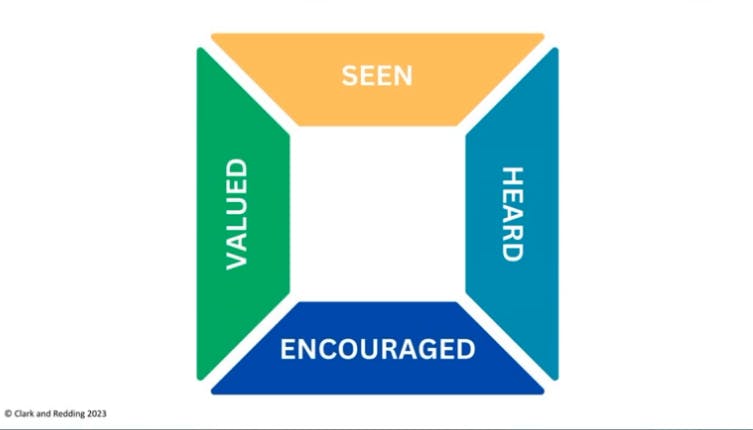
2024-5-29 08:43:7 Author: hackernoon.com(查看原文) 阅读量:0 收藏
Human resources is challenging for any company, especially when retaining employees. For example,
Retaining and attracting talent is where HRMS impacts the most with features that boost engagement. So, what’s the correlation between employee retention and engagement?
To understand the correlation, you need to understand an employee's psyche. A
HRMS can help you improve the engagement of employees with data-driven insights. This article will focus on how HRMS helps improve HR operations and employee engagement. But first, you need to understand the engagement aspect of an employee at its core.
What is Employee Engagement?
Employee engagement measures the level at which employees are committed, passionate, and involved with an organization's vision. However, it’s not just about an employee's connection with an organization's vision. According to the leading author and business thinker
- A company culture that fosters recognition
- Policies that make employees feel heard
- Creating an environment where employees feel valued
- Encouraging employees along their career paths
Maintaining all four aspects of employee engagement with effective tracking and feedback can make it easier. This is where you can leverage HRMS to track employee productivity and effectively get engagement-level data.
However, HRMS benefits go beyond engaging employees and improving their productivity. Here are some of the benefits you can expect from implementing HRMS.
HRMS Benefits You Can Expect For Employee Engagement
Here are some HRMS benefits, including tracing employee dissatisfaction, among others.
#1. Improving Transparency
Opaque organizations always need help with employee retention and lower productivity. Your employees will be in the dark if you don’t convey organizational goals, vision, and HR policies. This can make employees unaware of what they need to achieve and grow within your organization. One of the benefits of HRMS is the ease of conveying critical organizational goals and objectives.
HRMS improves transparency, allowing employees to access HR policies and resolve queries. Another significant benefit of HRMS is streamlined employee engagement.
#2. Streamlined Employee Engagement
Employee engagement activities include team bonding events, training, and professional and personal development. HRMS helps streamline all of these activities. It allows organizations to
- Host virtual games to encourage teamwork
- Plan and execute competitions for engagement
- Provide rewards and recognition through performance analysis
- Conduct employee pulse surveys
- Foster data-driven decision-making among employees
#3. Employee Evaluation Automation
One of the significant HRMS impacts is the automation of the employee evaluation process. Employee performance is one of the most important aspects of HR optimizations. According to a
HRMS helps in automating performance evaluation through custom report generation. Right from productive time tracking to task competition rates, you can generate reports on specific metrics defined for your organization.
#4. Documentation Efficiency
HRMS helps automate not just performance evaluation but also documentation. Analyzing performance and productivity and offering recognition requires data. With automated documentation of all the evaluation reports, you can access data anytime for better decision-making. HRMS also provides data visualizations through customized dashboards, improving visibility.
#5. Improved Training and Development
HRMS allows customization of employee training and development. Through in-depth analysis and deeper insights into employee’s capabilities, HRMS helps identify critical gaps. You can fill these skill gaps by customizing the training modules, ensuring HR optimizations. The best part is that HRMS also allows the development of customized training modules in the software itself.
Now that you know the benefits of HRMS, it’s time to understand the implementation.
How to Improve Employee Engagement With HRMSw
Here is a three-step plan to implement HRMS and improve employee engagement.
Step 1- Understand the Co-relation!
First, understand the correlation between engagement and productivity! Before you begin with HRMS implementation, understand how engagement impacts productivity. If an employee is not engaged, productivity will have a negative impact. According to a
Once you understand the co-relation, define specific engagement and productivity objectives. This will help you customize the HRMS according to particular goals.
Step 2- Choose the Right HRMS.
You can choose an off-the-shelf HRMS or build bespoke software aligned with your engagement goals. However, off-the-shelf software does not offer specific customizations, so selecting a custom-made HRMS makes more sense. Make sure you consider all the HR optimization requirements before finalizing the software.
Step 3- Implement HRMS Within the Organization
Implement HRMS modules for improved employee engagement. Make sure you have employee onboarding for HRMS designed well. Train your employees to use the HRMS effectively and track their performance, perks, benefits, and access to HR policies. You can automate key engagement activities, planning, and productivity tracking with HRMS.
Further, use employee performance, engagement activities, and productivity data to fine-tune HR policies.
Final Thoughts
Employee retention is becoming increasingly challenging with lower engagement rates. HRMS can help you improve both engagement rates and retention. This is also beneficial for the overall productivity of your organization. HRMS benefits include streamlining and automation of key engagement tasks. It also allows employee performance evaluation and in-depth data on their behavior.
Another significant HRMS impact is on the upskilling and development of employees. HRMS also allows organizations to ensure proper recognition of employees through customized data reports. However, the right software implementation becomes crucial to reap benefits and improve employee engagement.
如有侵权请联系:admin#unsafe.sh

